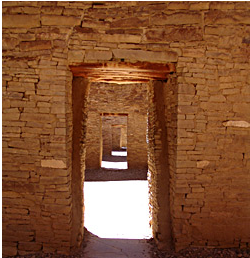Publication Date
5-14-2021
Abstract
It has long been assumed that fishes were unimportant in the diet of past Pueblo people in the U.S. Southwest. Yet, small numbers of fish remains are consistently recovered from Late pre-Hispanic/Early Historic archaeological sites in the Middle Rio Grande of New Mexico. The end of drought conditions may have impacted food choice and fishing decisions during this time. I use behavioral ecology to understand how fishing could have been an optimal food-getting strategy for Ancestral Pueblo farmers. Stable isotope analysis offers a way to account for environmental change. I provide a refined 13C Suess correction model to support the analysis of past fishing. The presence of aquatic ecological stability in the protohistoric Middle Rio Grande is revealed using stable isotope analysis and the refined 13C Suess correction model. Fish body size estimations provide a way to evaluate whether environmental conditions impacted the health of fishes and Ancestral Pueblo food choice. Stable isotope analysis and body size estimation suggest Ancestral Pueblo fishing strategies were associated with energy maximizing and risk reducing foraging behavior linked with environmental change. This mix of foraging goals could be significant in the development of fishing behavior throughout human history, and the analysis of Ancestral Pueblo fishing charts a course to change the human/fish narrative across the globe.
Keywords
Ancestral Pueblo, desert fishes, stable isotope analysis, ecological stability, 3D geometric morphometrics, 13C Suess effect
Document Type
Dissertation
Language
English
Degree Name
Anthropology
Level of Degree
Doctoral
Department Name
Anthropology
First Committee Member (Chair)
Emily Lena Jones
Second Committee Member
Frances M. Hayashida
Third Committee Member
Patricia L. Crown
Fourth Committee Member
Seth D. Newsome
Fifth Committee Member
Thomas F. Turner
Sixth Committee Member
Torben C. Rick
Recommended Citation
Dombrosky, Jonathan William. "Effects of Environmental Change on Ancestral Pueblo Fishing in the Middle Rio Grande." (2021). https://digitalrepository.unm.edu/anth_etds/209
Included in
Archaeological Anthropology Commons, Biogeochemistry Commons, Desert Ecology Commons, Environmental Chemistry Commons, Other Earth Sciences Commons, Paleobiology Commons, Terrestrial and Aquatic Ecology Commons, Water Resource Management Commons, Zoology Commons

